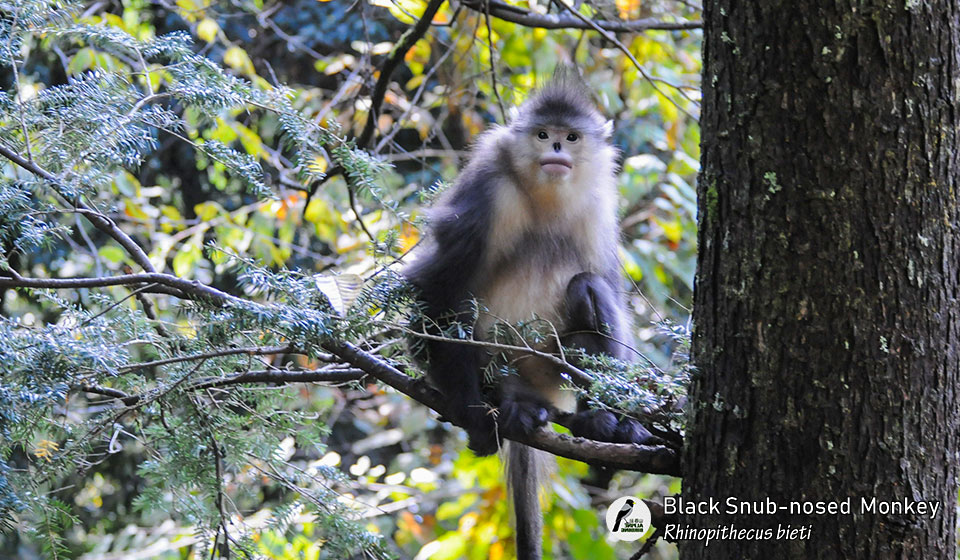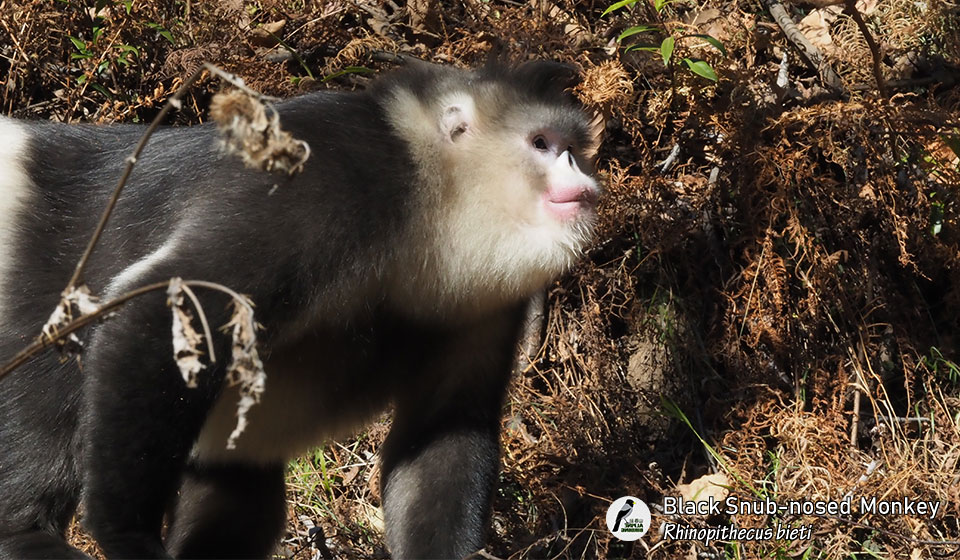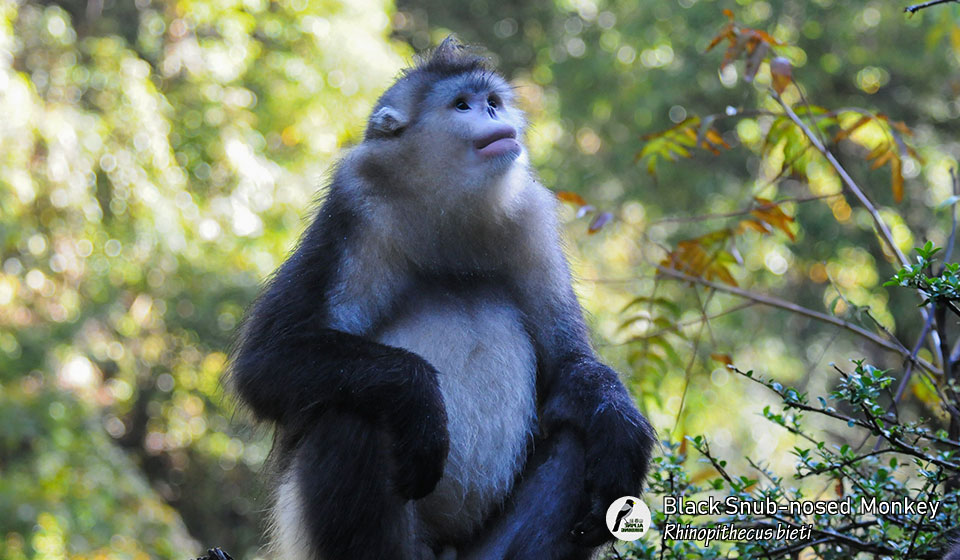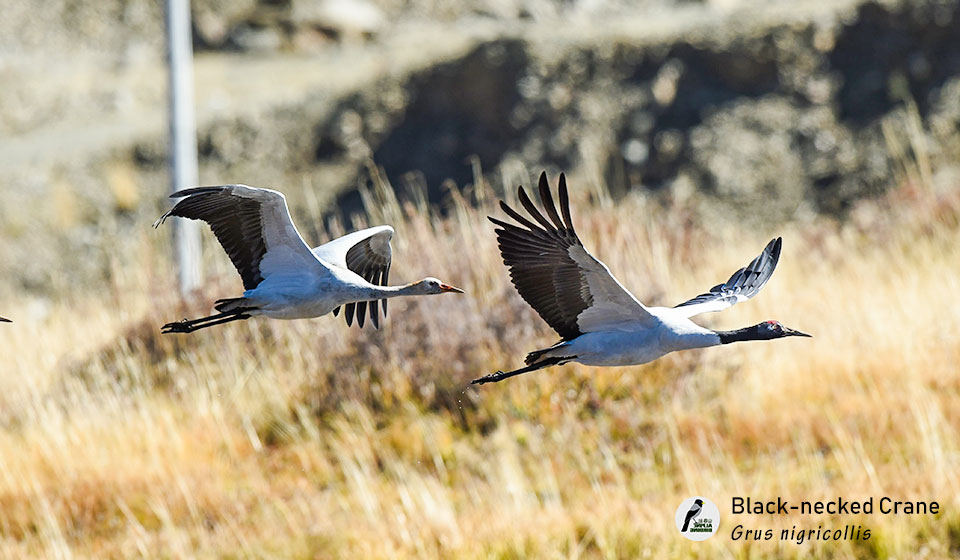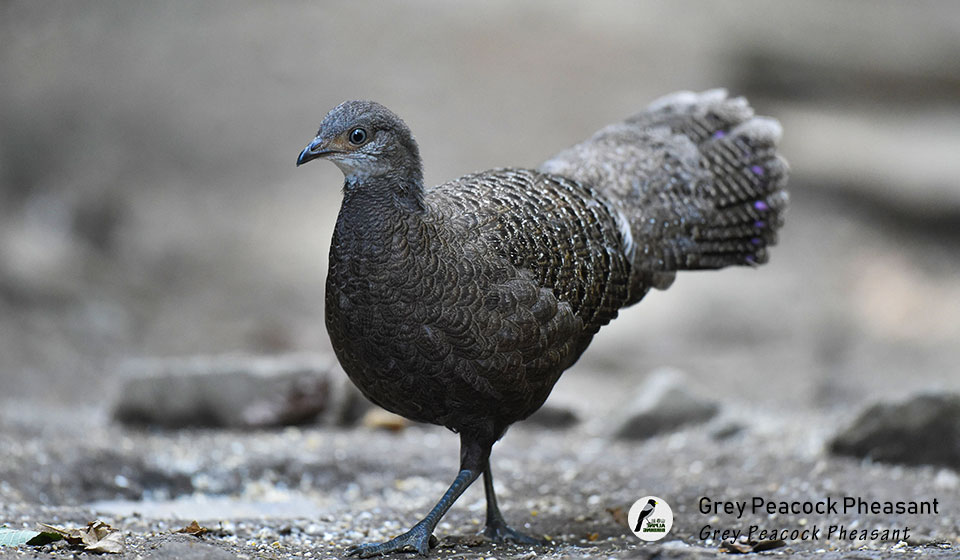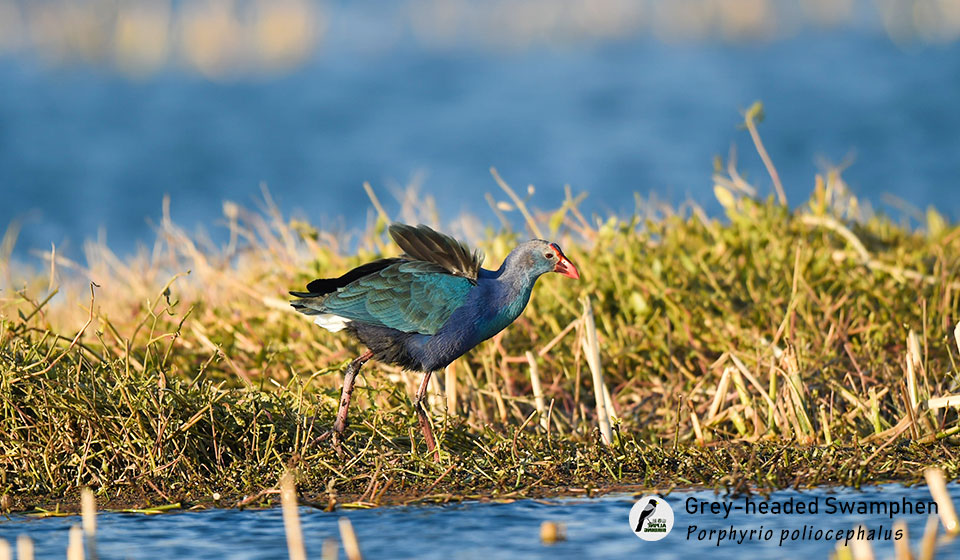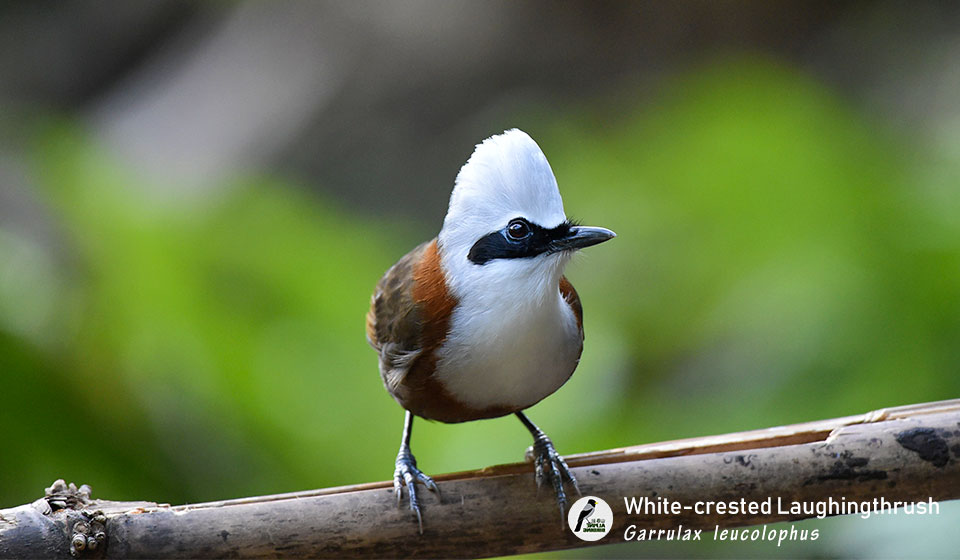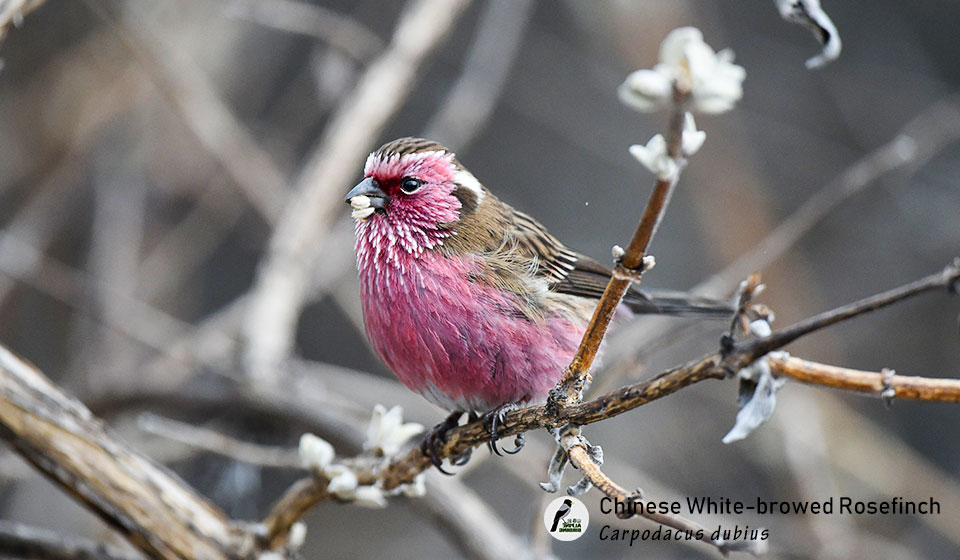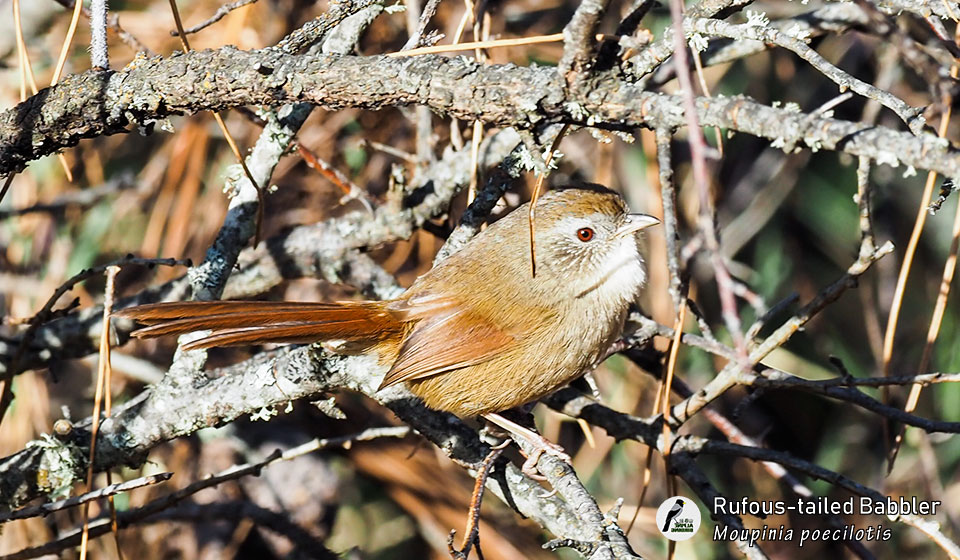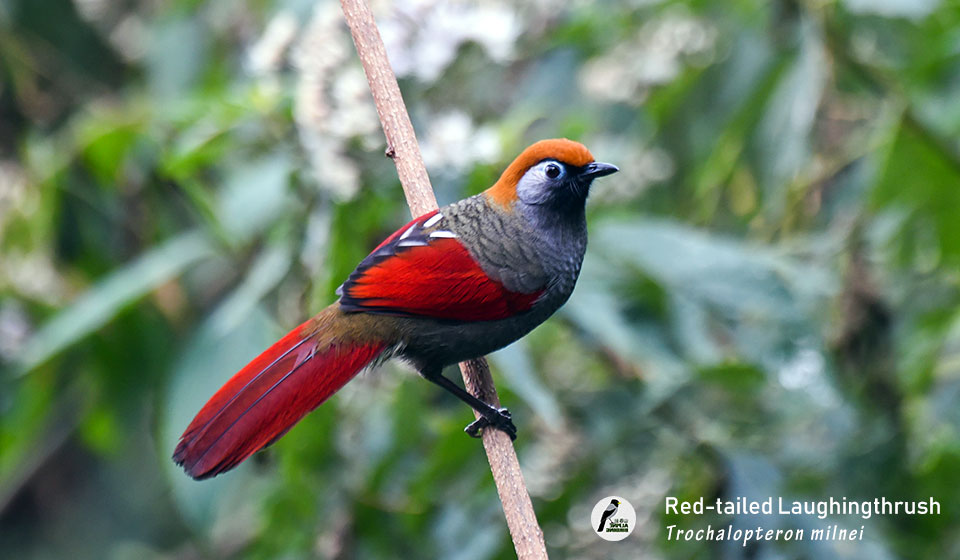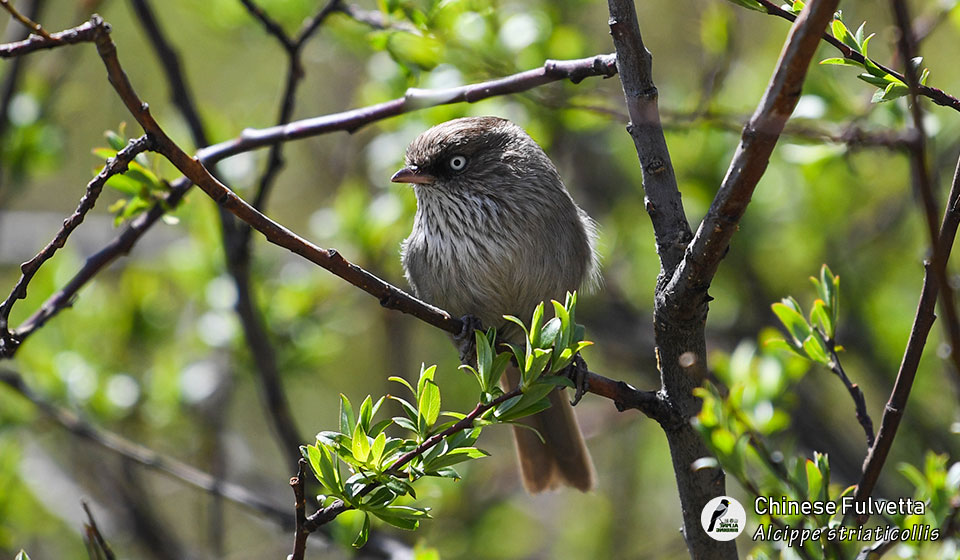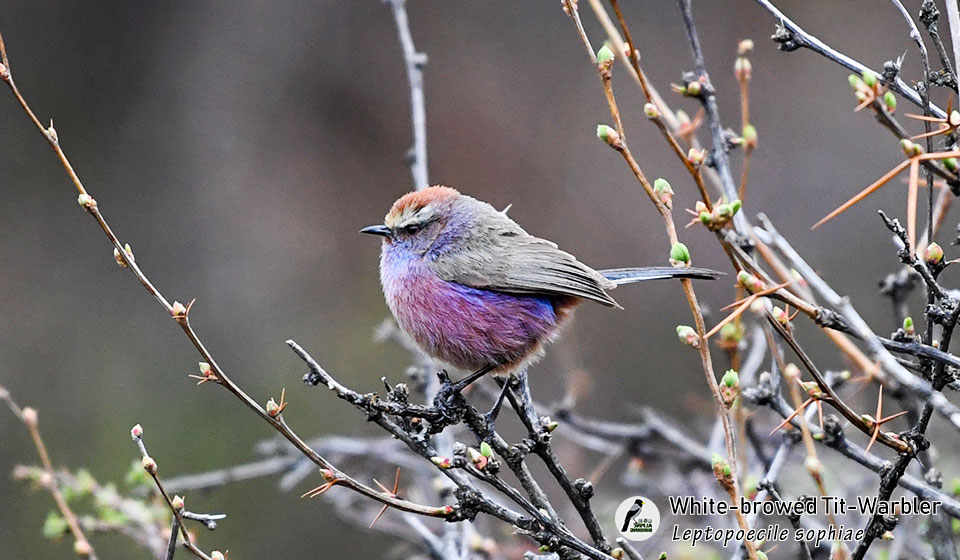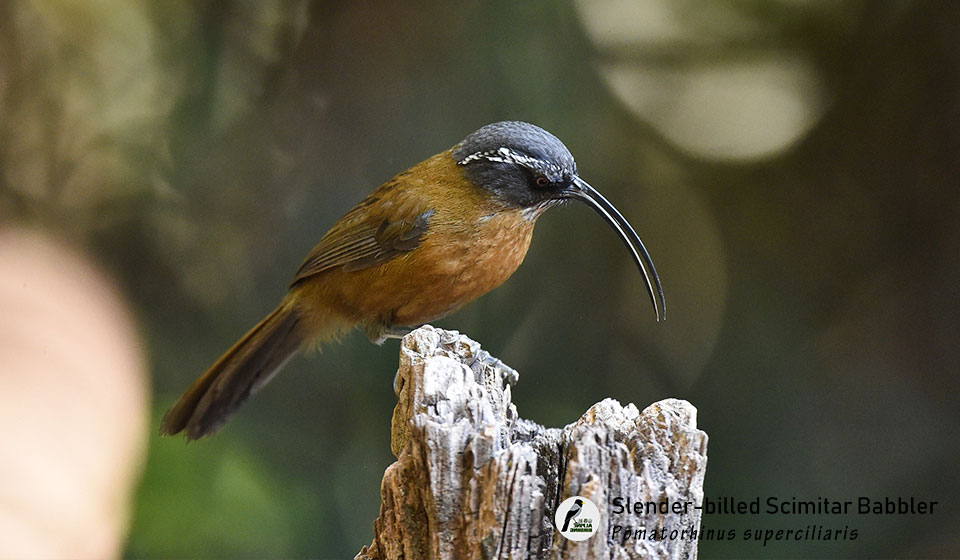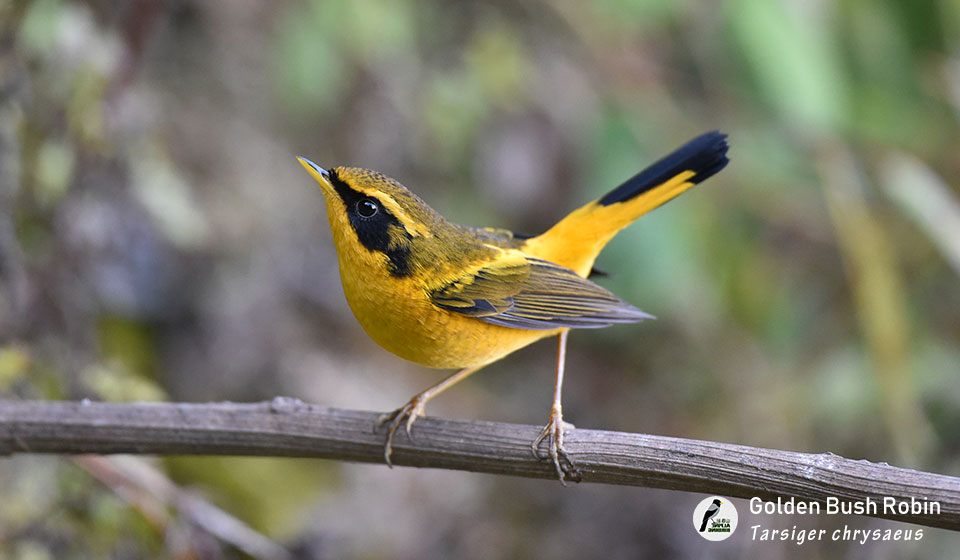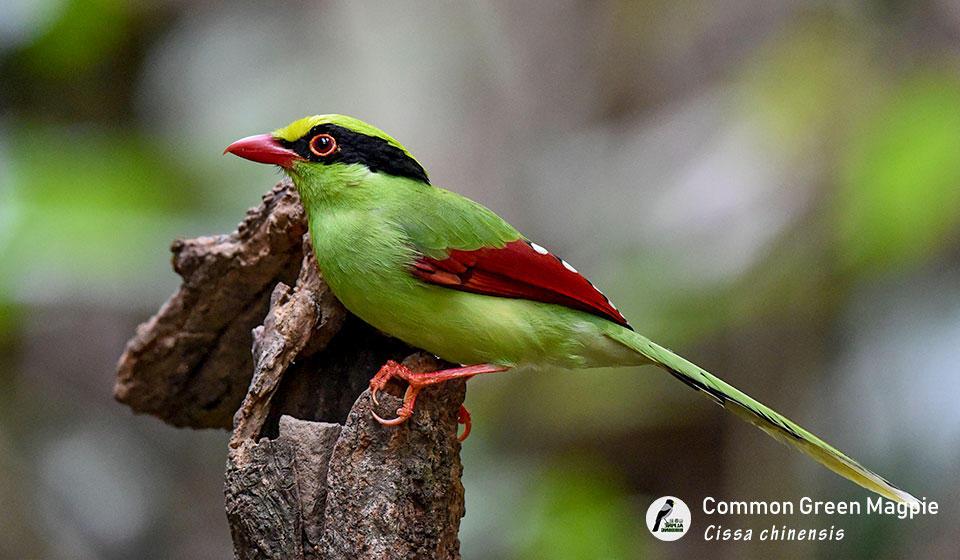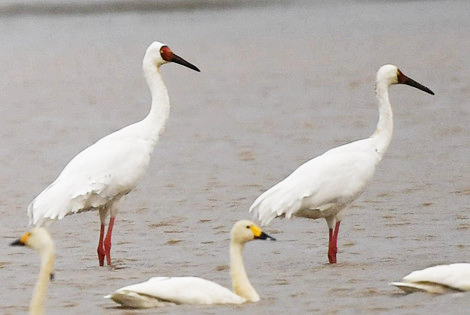Exploration in Yunnan, the "Kingdom of Plants and Animals"
With the biggest diversity of landforms in China including mountains, lakes, plateaus, wetlands, and plains, Yunnan Province boasts of the largest number of birds and mammal species which are restricted to different types of habitats. Being famed as the "Kingdom of Plants and Animals", Yunnan Province is home to the most of plant species in China and some incredible mammals including Black Snub-nosed Monkey, Skywalker Hoolock Gibbon (Gaoligong Hoolock Gibbon), Phayre's Leaf-monkey, Stump-tailed Macaque, Bengal Slow Loris, etc. Besides, Yunnan has recorded over 940 bird species including around 40 endemic species, ranking first in China in terms of the total.
This itinerary covers some prestigious wildlife sites in Yunnan Province. For insurance, the little-known Black Snub-nosed Monkey Nature Reserve and the Gaolinggong Mountains which has been listed as one of the 36 biodiversity hotspots. Besides, we will visit Cangshan Mountains, Yingjiang, Tengchong, etc. These places hold a great diversity of pheasants, laughingthrushes, babblers, parrotbills, and hornbills. We can expect some extraordinary birds like White-cheeked Partridge, Rufous-throated Partridge, Red Junglefowl, Kalij Pheasant, Silver Pheasant, Mrs. Hume's Pheasant, Lady Amherst's Pheasant, Grey Peacock Pheasant, Grey-headed Swamphen, Great Hornbill, Oriental Pied Hornbill, Golden-throated Barbet, Blue-throated Barbet, Long-tailed Broadbill, etc.
Tour Info Sheet
| Highlight Birds | Black-necked Crane, Black Stork, Bar-headed Goose, White-tailed Eagle, Steppe Eagle, Imperial Eagle, Great Hornbill, Oriental Pied Hornbill, Wreathed Hornbill, Grey Peacock Pheasant, Red Junglefowl, Kalij Pheasant, White-cheeked Partridge, Lady Amherst's Pheasant, Silver Pheasant, Mrs. Hume's Pheasant, Hill Partridge, Mountain Bamboo Partridge, Rufous-throated Partridge, Slender-billed Scimitar Babbler, Red-billed Scimitar Babbler, Coral-billed Scimitar Babbler, Red-tailed Laughingthrush, Chestnut-crowned Laughingthrush, Blue-winged Laughingthrush, Scarlet-faced Liocichla, Alexandrine Parakeet, Red-breasted Parakeet, Blossom-headed Parakeet, Golden-throated Barbet, Blue-throated Barbet, Broad-billed Warbler, Crested Treeswift, Bay Woodpecker, Greater Yellownape, Stripe-breasted Woodpecker, White-browed Piculet, Long-tailed Broadbill, Silver-breasted Broadbill, Red-tailed Minla, Scarlet Finch, Grey-headed Parrotbill, Spot-breasted Parrotbill, Rufous-headed Parrotbill, Pale-billed Parrotbill, Whiskered Yuhina, Rufous-vented Yuhina, Beautiful Sibia, Long-tailed Sibia, Large Niltava, Rufous-bellied Niltava, Golden Bush Robin, Rusty-fronted Barwing, Yellow-cheeked Tit, Fire-tailed Sunbird, Black-throated Sunbird, Mrs. Gould's Sunbird, Green-tailed Sunbird, Dark-sided Thrush,Grey-winged Blackbird, Long-tailed Thrush, Wedge-billed Wren Babbler, Streaked Wren Babbler, Grey-bellied Tesia, Slaty-bellied Tesia, Chestnut-headed Tesia, Yunnan Nuthatch, Velvet-fronted Nuthatch, White-browed Fulvetta, Rusty-capped Fulvetta, Yunnan Fulvetta, Pink-rumped Rosefinch, Sharpe's Rosefinch, Long-tailed Rosefinch, Chinese White-browed Rosefinch, etc. |
|---|---|
| Numbers of Species to Expect | 200-250 |
| Ease of Birding | moderate with a few tricky species |
| Highlight Mammals | Black Snub-nosed Monkey, Skywalker Hoolock Gibbon, Phayre's Leaf-monkey, Stump-tailed Macaque, Bengal Slow Loris, Black Giant Squirrel, etc. |
| Other Attractions | colorful minority culture of Yi, Bai, Hui, Dai, etc. |
| Photography Opportunities | good photography chances for mammals, birds, scenery, and the people |
| Habitats Covered | tropical and subtropical forests, woodlands |
| Expected Climate | very comfortable, cool in the morning, warm in the south part |
| Physical Requirements | mostly easy, demanding but optional in certain parts |
| Accommodation | comfortable |
| Transportation | 19-seat van |
What makes this trip irreplaceable?
1. Nice chances for Yunnan Snub-nosed Monkey, Skywalker Hoolock Gibbon (Gaoligong Hoolock Gibbon), Phayre's Leaf-monkey, Stump-tailed Macaque, Bengal Slow Loris, etc.
2. This itinerary covers the most popular bird and wildlife sites in Yunnan.
3. We run the trip in the best season. In wintertime, birds move to lower altitudes and tend to stay as flocks.
4. An experienced wildlife guide who has guided this trip many times ensures you a lifetime traveling experience.
5. A small group size of no more than 8 travelers.
6. Years of working as a local partner for some prestigious western companies specialized in birds and wildlife.
7. A strong logistic team in the office to ensure our trip goes smoothly and every participant has a comfortable and memorable journey.
Dates & Prices
| Dates | Booking Status | Price | Single Supplement | Group Size | Guide |
|---|---|---|---|---|---|
| Dec 15-31, 2025 | Space Available | TBA | TBA | 6-8 | Local Guide |
Slide the sheet to the left to see the full sheet if you are viewing it on your phone or tablet.
The cost includes the following:
1. Private transportation throughout the trip, including airport pick-up in Shangri-La and drop-off in Tengchong.
2. All meals from dinner on day 1 to breakfast on day 17.
3. All the entrance tickets for places listed in the itinerary including cable cars and shuttle buses.
4. Hotel stays from the first day to the last day, two clients occupy one twin-bed room on a sharing basis at nice 3 or 4-star hotels in big cities and local best guesthouses in remote areas.
5. Bottled water and snacks throughout the trip.
6. Simple western breakfast whenever possible.
7. Service charges of a professional and experienced wildlife guide throughout the whole trip.
8. China domestic travel insurance.
9. Service of all logistic supports.
The cost does not include the following:
a. Drinks during meals.
b. Extra charges due to changes in the itinerary from the client's side or factors beyond the control of AlpineBirding such as natural disasters or government policy changes.
c. Discretionary tips to guides and drivers.
d. All personal expenses such as laundry service.
e. ANY AIRFARE except those stated in the itinerary.
f. Any program not listed in the itinerary.
Itinerary
Tour Map
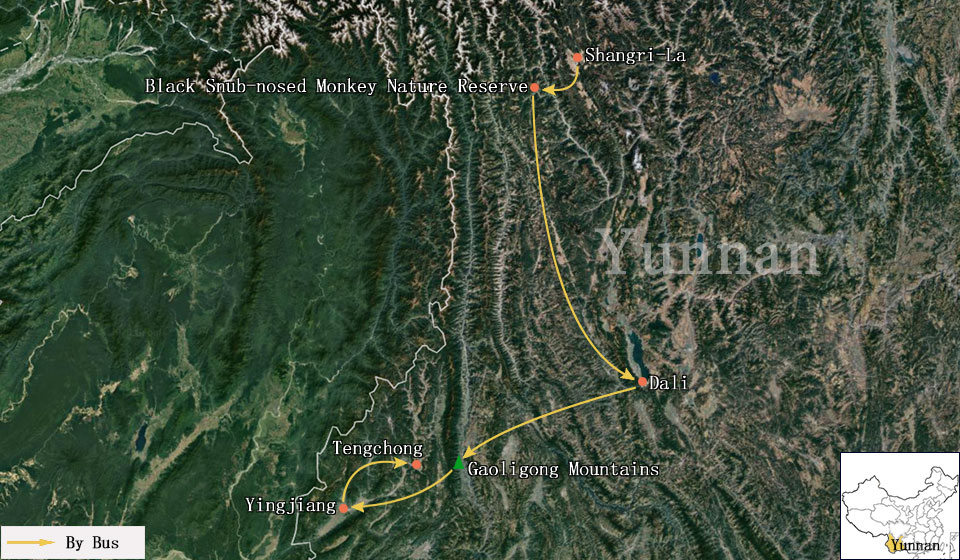
Day 1: Arrival in Shangri-La, Yunnan.
Arrive in Shangri-La or Xianggelila, capital of Diqing Tibetan Autonomous Prefecture, which is famous for its pleasant climate, rich cultural and natural diversity. Meet your private guide or driver upon arrival at the airport before being driven for about 20 minutes to the downtown hotel.
Day 2: Shangri-La Alpine Botanical Garden & Napa Hai Nature Reserve.
Shangri-La Alpine Botanical Garden is the only botanical garden in the Tibetan regions in China, and it is also China's first high-elevation botanical garden built at low latitude. With its unique geography and location, this garden is occupied by alpine coniferous forests and other alpine floras and is home to many exciting forest species. We will have a good chance of seeing Yunnan Nuthatch, Rufous-tailed Babbler, Chinese Fulvetta, White-browed Fulvetta, Rufous-vented Tit, Grey-crested Tit, Sichuan Tit, Black-browed Tit, Buff-barred Warbler, Giant Laughingthrush, Elliot's Laughingthrush, White-throated Redstart, Rufous-breasted Accentor, White-winged Grosbeak, Pink-rumped Rosefinch, Sharpe's Rosefinch, Long-tailed Rosefinch, Chinese White-browed Rosefinch, Black-headed Greenfinch, Godlewski's Bunting, etc.
Located 8km away from the downtown, Napa Hai (Napa Lake) is a seasonal alpine lake surrounded by mountains. It is replenished by meltwater from the mountains in summer, while parts of it turn into small grasslands and wetlands in winter with the evaporation of the water. As a result of it, thousands of waterfowls and grassland birds visit this area during wintertime including the elegant Black-necked Crane. Other birds need our attention here including Black Stork, Bar-headed Goose, Greylag Goose, Ruddy Shelduck, Falcated Duck, Northern Pintail, Red-crested Pochard, Common Pochard, Ferruginous Duck, Tufted Duck, Goosander, Great Crested Grebe, Pallas's Gull, Brown-headed Gull, Great White Egret, Chinese Pond Heron, Himalayan Griffon, White-tailed Eagle, Steppe Eagle, Imperial Eagle, Black Kite, Common Kestrel, Grey-backed Shrike, Red-billed Chough, Daurian Jackdaw, etc.
Day 3: Lamuyangcuo Lake to Black Snub-nosed Monkey Nature Reserve.
Located at the front of the famous Songzanlin Lamasery, Lamuyangcuo Lake is another important destination for migratory birds to Yunnan. We can visit the lake this morning if we miss any of our targets on the previous day. This small lake attracts many interesting waterfowls in wintertime. In addition, the nearby shrubs and forests are home to many highland specials such as Common Snipe, Great Bittern, Cattle Egret, White-browed Tit Warbler, Himalayan Beautiful Rosefinch, Little Bunting, etc.
We will drive on to the Black Snub-nosed Monkey Nature Reserve this afternoon. Along the way, we will explore some stream sides and valleys for Crimson-browed Finch, Black-streaked Scimitar Babbler, Yellow-bellied Fairy Fantail, White-throated Fantail, Spotted Nutcracker, etc.
Day 4-5: Black Snub-nosed Monkey Nature Reserve.
Located in the core area of the Three Parallel Rivers of Yunnan Protected Areas, the reserve holds a primitive and complete eco-system that consists of a lot of elusive and unique wildlife and floras including the extraordinary Black Snub-nosed Monkey. The monkey, also known as Yunnan Snub-nosed Monkey, is a large black and white primate that lives only in the southern Chinese province of Yunnan. Coniferous and deciduous forests in the mountainous regions of Yunnan are the ideal terrain for these primates. With their strong adaptations to the environment, these monkeys thrive at extreme altitudes despite the below-freezing temperatures and thin air. So they live at the highest altitude of any known non-human primate.
The lush vegetation is also home to many interesting birds such as Hume's Pheasant, Lady Amherst's Pheasant, Koklass Pheasant, Stripe-throated Yuhina, Bar-winged Wren Babbler, Giant Laughingthrush, Elliot's Laughingthrush, Black-faced Laughingthrush, Black-headed Sibia, Long-tailed Rosefinch, Sharpe's Rosefinch, Godlewski's Bunting, Yellow-throated Bunting, etc. We will spend two full days inside the reserve to search for our targets.
Day 6: The Monkey Nature Reserve to Dali.
We will continue our exploration in the reserve this morning, then drive on to Dali in the afternoon. Dali is most famous for the huge lake named Erhai and the grand Cangshan Mountains standing by the western side of the lake. If time permits, we will go to Erhai to look for some waterfowls like Purple Swamphen (Grey-headed Swamphen).
Day 7: Dali to Gaoligong Mountains via Cangshan Mountains.
For birders, Cangshan Mountains are very attractive for rich forest bird species of low and middle elevations. According to statistics, over 200 bird species have been recorded here. In the early morning, we will drive along a paved mountain road up to the higher part of the mountain and start our morning search for the star bird Lady Amherst's Pheasant from there. Then we will slowly walk down the winding road to search for other specials including Spotted Nutcracker, Black-browed Tit, White-browed Fulvetta, Rusty-capped Fulvetta, Yunnan Fulvetta, Stripe-throated Yuhina, Rufous-capped Babbler, Elliot's Laughingthrush, Spotted Laughingthrush, Streak-breasted Scimitar Babbler, Chestnut-tailed Minla, Yellow-throated Bunting. With a good amount of work, we also have chances to see Rufous-tailed Babbler and Bar-winged Wren Babbler. In the afternoon, we will complete a 4.5-hour journey to the Gaoligong Mountains.
Day 8-9: Gaoligong Mountains (Baihualing area).
Located on the western side of Yunnan Province, the Gaoligong belongs to the south end of the Hengduan Mountain Range, the elevation changes sharply from 650 meters at the bottom to 5,128 meters at the peak. As a result of its 7 complete vegetation types, Gaoligong Mountains have been rated as one of the 36 hot spots for biodiversity by Conservation International. So far, around 525 bird species have been recorded here, accounting for 43.3% of the total in Yunnan Province, in which around 40 bird species are under national protection.
Winter is the best birding season in Yunnan, as most birds move to lower-altitude areas that are warmer and have more food available. Besides, birds tend to stay as flacks in winter which gives us more opportunities to see them.
We will spend two days here searching for birds in different habitats. Some species tend to feed on the ground such as Silver Pheasant, Mrs. Hume's Pheasant, Hill Partridge, Mountain Bamboo Partridge, Rufous-throated Partridge, Slender-billed Scimitar Babbler, Red-tailed Laughingthrush, Chestnut-crowned Laughingthrush, Blue-winged Laughingthrush, Scarlet-faced Liocichla, Grey-winged Blackbird, Long-tailed Thrush, Wedge-billed Wren Babbler, Grey-bellied Tesia, Slaty-bellied Tesia, Chestnut-headed Tesia, etc.
During our exploration in the dense virgin forests, we will look for Himalayan Cutia, Mountain Imperial Pigeon, Great Barbet, Golden-throated Barbet, Blue-throated Barbet, Broad-billed Warbler, Bay Woodpecker, Greater Yellownape, Red-tailed Minla, Scarlet Finch, Grey-headed Parrotbill, Spot-breasted Parrotbill, Whiskered Yuhina, Rufous-vented Yuhina, Striated Bulbul, Flavescent Bulbul, Beautiful Sibia, Long-tailed Sibia, Large Niltava, Rufous-bellied Niltava, Golden Bush Robin, Snowy-browed Flycatcher, Rusty-fronted Barwing, Short-billed Minivet, Scarlet Minivet, Yellow-cheeked Tit, etc. In addition, we can also see some beautiful sunbirds including Fire-tailed Sunbird, Black-throated Sunbird, Mrs. Gould's Sunbird, Green-tailed Sunbird, etc.
There are a lot of "bird hides" built in Gaoligong thanks to the fast development of bird watching and bird photography. For people who prefer to enjoy a good number of species more easily, those bird hides are the best places to achieve this goal.
Day 10: Gaoligong Mountains to Gaoligongshan Natural Park.
We will spend some time birding on the mountain foot area before we drive to Gaoligongshan Natural Park.
Day 11-12: Gaoligongshan Natural Park.
Although the habitat in Gaoligongshan Natural Park is similar to the Gaoligong Mountains, we have the best chance to find a unique creature here, namely the Skywalker Hoolock Gibbon (Gaoligong Hoolock Gibbon). It is one of three species of hoolock gibbons and was first described in January 2017. The Skywalker Hoolock Gibbon is named after Luke Skywalker from the Star Wars franchise, as the scientists who described it are fans of the franchise. It will be our most top target during our two-day exploration here. With some luck, we can also expect Phayre's Leaf-monkey, Stump-tailed Macaque, Bengal Slow Loris, Black Giant Squirrel, etc.
Birding is also exciting here, we have good chances to encounter some sought-after species including Silver Pheasant, Black Eagle, Crested Goshawk, Great Barbet, Golden-throated Barbet, Blue-throated Barbet, Crimson-breasted Woodpecker, Bay Woodpecker, Black-eared Shrike Babbler, Black-winged Cuckooshrike, Yellow-cheeked Tit, Scaly-breasted Cupwing, Pygmy Cupwing, Ashy-throated Warbler, Davison's Leaf Warbler, Black-faced Warbler, Golden-breasted Fulvetta, Black-throated Parrotbill, Striated Yuhina, Rufous-vented Yuhina, Grey-sided Laughingthrush, Blue-winged Laughingthrush, Red-tailed Laughingthrush, Beautiful Sibia, White-browed Bush Robin, White-tailed Robin, Long-tailed Thrush, Chinese Thrush, Fujian Niltava, Himalayan Shortwing, Green-tailed Sunbird, Blue-winged Leafbird, etc.
Day 13: Gaoligongshan Natural Park to Yingjiang.
We will continue our exploration in Gaoligongshan Natural Park before driving to Yingjiang in the afternoon.
Day 14-15: Yingjiang & surrounds.
Located at the end of the southwest, Yingjiang is a county that borders Myanmar. With opulent sunshine, flourishing virgin forests, and various habitats, over 680 kinds of birds have been recorded here, which count around 50% of bird species of China. That's what makes YingJiang one of the unmissable birding destinations in China. During our two-day exploration, we will mainly focus on the Dayingjiang River and the Hornbill Valley. In the reed marshes and benchlands of Dayingjiang River, we will get to see some very special species. Among them, we may seek out several River Terns although it can be difficult as there are only around 10 terns visit this area every winter. Other species we hope to encounter including Indian Spot-billed Duck, Small Pratincole, River Lapwing, Little Ringed Plover, Temminck's Stint, Coppersmith Barbet, Alexandrine Parakeet, Red-breasted Parakeet, Blossom-headed Parakeet, Striated Grassbird, Rufescent Prinia, Grey-breasted Prinia, Grey-throated Martin, Asian Barred Owlet, Dusky Warbler, Collared Myna, Great Myna, Citrine Wagtail, Paddyfield Pipit, Little Bunting, etc.
We will spend at least a day in the Hornbill Valley, an up-and-coming birding site that is renowned for the best place to see hornbills in China, in addition to a big variety of pheasants, laughingthrushes, flycatchers. We will slowly explore the forest in search of birds including Great Hornbill, Oriental Pied Hornbill, Wreathed Hornbill, Grey Peacock Pheasant, Red Junglefowl, Kalij Pheasant, White-cheeked Partridge, Green-billed Malkoha, Crested Serpent Eagle, Jerdon's Baza, Collared Scops Owl, Spot-bellied Eagle Owl, Brown Boobook, Red-headed Trogon, Blue-bearded Bee-eater, Blue-eared Barbet, Greater Flameback, Lesser Yellownape, Great Slaty Woodpecker, Collared Falconet, Oriental Hobby, Long-tailed Broadbill, Blue-naped Pitta, Black-hooded Oriole, Greater Racket-tailed Drongo, Collared Treepie, Sultan Tit, Striated Swallow, Black-crested Bulbul, Grey-eyed Bulbul, Pin-striped Tit Babbler, Red-billed Scimitar Babbler, Coral-billed Scimitar Babbler, Large Scimitar Babbler, Spot-throated Babbler, Rufous-chinned Laughingthrush, Greater Necklaced Laughingthrush, Streaked Wren Babbler, Nepal Fulvetta, Velvet-fronted Nuthatch, White-rumped Shama, White-tailed Flycatcher, Lesser Shortwing, Blue-winged Leafbird, etc. Here, the "bird hide" is also optional to increase our chances.
Day 16: Yingjiang to Tengchong.
We can spend some time in Yingjiang to try our targets, then we will drive on to Tengchong.
Day 17: Departure from Tengchong.
After breakfast at the hotel, we will drive to Tengchong Airport to catch your flight. Depart from Tengchong, AlpineBirding service ends.
Guide(s)
We will arrange one of our best local wildlife guides for this trip who has rich experience of guiding tours in this region. The followings are some of our professional guides who have guided tours in this area for many years.
Bella Zhang
Bella, the director of AlpineBirding, graduated from Sichuan Agricultural University with a Bachelor's Degree. She joined AlpineBirding in early 2016 and became the director of AlpineBirding in 2018. She was born and grown up in a Bai ethnic family in Yunnan Province which boasts of the largest number of bird species in China. Her interests toward birds started with her observation of a Long-tailed Minivet in her mom's garden at a very young age. As she grows up, the interests and love toward birds become stronger and stronger. Because of that, she found AlpineBirding before graduation and joined the company for further learning of birds. Bella has guided a number of birding trips in cooperation with AlpineBirding guide in the past years, her passion, readiness to help and detail-oriented attitude have won her lots of praise from our clients.
Philip He
As a half Kangba Tibetan, Philip is the main founder of AlpineBirding and is a native of Ganzi Tibetan Autonomous Prefecture. He has a deep love for his Kangba Tibetan heritage and the land where he was born and raised. Philip's career has gone from mining technician to a teacher, then a translator, and finally to a guide and tour operator. As a professional working in this field for more than 20 years, Philip believes travel is an art and a process of sharing and discovery. Each trip is a unique artistic work created with knowledge and expertise based on the resources available and the interests and tastes of travelers. To help more people to gain a lifetime birding and traveling experience, he established AlpineBirding with the aim to bring his professional, fun-filled tours to more people who are eager to explore birds and other beautiful attractions in China.
Linked Tours
Before this trip, you can join the second departure of our 16 days "Southeast China Winter Birding Tour" in 2021 which will be started on Nov 30 and ended on Dec 15—the day when the "Yunnan Birding & Wildlife Tour" departs.
Reports
We don't have a report available for this tour at this stage, please feel free to email us, we are more than happy to answer any of your questions and share the latest bird information with you.
Testimonials
.
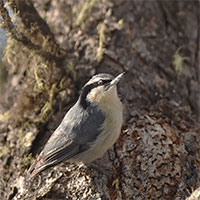
-
Several Very Good Weekend Trips in Sichuan and Yunnan
My wife and I are serious birders from the US. During 2018, we lived in Thailand for a work assignment, and had the opportunity to do several weekend trips up to China to go birding with Alpine.We had successful and memorable outings in Zixishan (Yunnan), as well as Balangshan and Longcanggou (Sichuan), picking up specialties such as Alpine Accentor, Lammergeier, Black-headed Mountain-Finch, Blood Pheasant, Dark-breasted Rosefinch, Elliot's Laughingthrush, Giant Laughingthrush, Golden Pheasant, Koklass Pheasant, Snow Partridge, Snow Pigeon, Tibetan Snowcock, Verreaux's Partridge, White Eared-Pheasant, White-capped Redstart, Chinese Bamboo-Partridge, Golden-breasted Fulvetta, Gray-faced Liocichla, Lady Amherst's Pheasant, Red-tailed Laughingthrush, Temminck's Tragopan, Bar-tailed Treecreeper, Godlewski's Bunting, and Yunnan Nuthatch, in addition to many others.Even without the birds, Balangshan has the most inspiring mountain vistas we've ever seen.Bella and her team arranged for comfortable transportation, lodging, and very experienced guides. But the best additional benefit was the food - our guides always took us out for the best local lunches and dinners - it will be very difficult to return home and have Sichuan food now, knowing how it pales in comparison to the real Chinese food in China...Bella and Alpine were also very responsive and attentive to our overall satisfaction, and when we suggested some things that could be improved, they were happy to accommodate us. It was much appreciated.We recommend Alpine Birding as a great way to see some of the most incredible birds found only in one of the most beautiful regions of Asia.
Claire and Michael / Southwest China (Sichuan & Yunnan) May 29, 2018
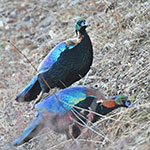
-
Dear Philip, lily and Jiawei,
We are all noww safeyl back home and Ihave had time to produce my trip reoprt for the wonderful bird tour that you arranged for us. I attach the docuemtns here for your interest - you may use them and adapt them any way you wish if you need to.
It was a great experience seeing China - the birds, travel, culture, sceerny with you. You did an absoluteyl first rate job in all respects - some of the best service and professional arrqngements and leading of a tour in my 40+ years of experience worldwide to 100 countries and over 300 tours organised and led.
Thank you all - I will certainly promote your services to my friends and colleagues and hope your business prospers as it deserves. If I can be of any help do let me know.Peter & Pia / Southwest China (Yunnan) December 27, 2013
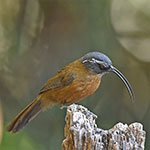
-
2005 Winter Birding Trip to Yunnan, ChinaI had a wonderful time birding in Yunnan with Philip He and Parus Yang from Alpine Birding Tour.They are so professional and helpful. They did their best to arrange comfortable accommodation and food. We did birding to sites of Mountains, hills, lakes, and farmlands in Yunnan. Parus Yang, a young man with an ornithological degree, is a very knowledgeable bird guide with sharp eyes and ears.I've observed total 235 species and 97 lifers. It's really fruitful and enjoyable.I look forward to joining their next birding tour.
Victor Yu / Southwest China (Yunnan) January 12, 2005
